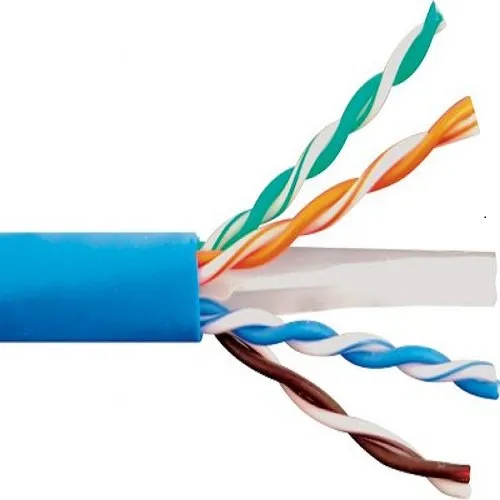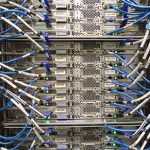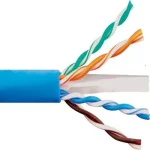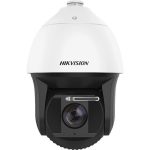Have you ever wondered why Cat6 handles 1 Gbps over 100 meters but only 10 Gbps up to 55 meters?
- Cat6 cables support 1 Gbps up to 100 meters but only 10 Gbps up to 55 meters due to higher frequency needs for faster speeds.
- Higher speeds mean more signal loss (attenuation) and interference (crosstalk), limiting distance for 10 Gbps.
- This surprising performance gap shows how cable design affects network setup, especially for high-speed needs.
Why Cat6 Supports Different Speeds at Different Distances
Cat6 Ethernet cables are great for networking, but their performance changes with speed and distance. For 1 Gbps, they work fine up to 100 meters because this speed uses lower frequencies (up to 125 MHz), which don’t lose much signal strength over distance. However, for 10 Gbps, they’re limited to 55 meters. This is because 10 Gbps needs higher frequencies (up to 350 MHz), which lose more signal strength and are more prone to interference from nearby cables, called crosstalk.
The Role of Signal Attenuation
Signal attenuation is like the signal getting weaker as it travels, similar to a car losing power uphill. For 10 Gbps, the higher frequency means more attenuation, so by 55 meters, the signal is too weak for reliable data transfer. For 1 Gbps, the lower frequency means less attenuation, allowing the signal to travel the full 100 meters.
How Crosstalk Affects Performance
Crosstalk is interference from other wires, like background noise in a conversation. At higher frequencies for 10 Gbps, crosstalk, especially from nearby cables (alien crosstalk), gets worse, making the signal quality drop faster over distance. This is why 10 Gbps is limited to 55 meters on Cat6, while 1 Gbps, with less crosstalk, can go to 100 meters.
Detailed Analysis and Technical Insights
This section provides a comprehensive exploration of Cat6 cable length limitations, focusing on the technical reasons behind the distance disparities for 1 Gbps and 10 Gbps speeds, and how signal attenuation and alien crosstalk impact performance over distance. The analysis is grounded in industry standards and technical specifications, offering a detailed understanding for network professionals and enthusiasts.
Introduction to Cat6 Cable and Its Specifications
Category 6 (Cat6) Ethernet cables are a standardized twisted pair cabling solution designed for Ethernet and other network physical layers, backward compatible with Cat5/5e and Cat3 standards. Formalized in 2001 and published by the Telecommunications Industry Association (TIA) in June 2002 under ANSI/TIA-568.2-D, Cat6 is specified for frequencies up to 250 MHz, supporting data rates up to 1 Gbps over 100 meters and 10 Gbps over a reduced distance of 55 meters. This performance is achieved through tighter manufacturing tolerances to reduce noise and crosstalk compared to previous categories.
Frequency Requirements for Ethernet Speeds
The relationship between Ethernet speed and frequency is critical to understanding distance limitations:
- 1 Gbps (1000BASE-T): This standard operates using frequencies up to approximately 125 MHz per wire pair, well within the 250 MHz specification of Cat6. This allows for reliable transmission over the standard 100-meter distance, as the signal loss is manageable at these frequencies.
- 10 Gbps (10GBASE-T): This standard requires a broader frequency spectrum, typically up to 350 MHz, to achieve the higher data rate. This exceeds the nominal 250 MHz specification of Cat6, leading to increased signal degradation over distance, which is why the maximum distance is reduced to 55 meters.
The higher frequency requirement for 10 Gbps means the signal has a shorter wavelength, making it more susceptible to attenuation and noise.
Signal Attenuation and Its Impact
Signal attenuation, also known as insertion loss, measures the loss of signal power as it travels through the cable. It is influenced by frequency and distance, with higher frequencies experiencing greater attenuation. The attenuation in twisted pair cables typically follows a pattern where it increases with the square root of frequency and linearly with distance. For Cat6, the TIA standard specifies maximum insertion loss values, such as approximately 22 dB at 100 MHz for a 100-meter channel, increasing to around 36 dB at 250 MHz for the same distance.
For 10 Gbps, operating at frequencies up to 350 MHz, the attenuation is even higher. Estimates from cable datasheets suggest that at 350 MHz, the insertion loss for a 100-meter Cat6 cable could reach 45 dB, far exceeding the receiver’s sensitivity threshold for reliable data transmission. To maintain signal integrity, the distance must be reduced. At 55 meters, the insertion loss at 350 MHz is estimated to be around 24.75 dB (proportional scaling), which is within acceptable limits for 10GBASE-T systems, as per guidelines in technical bulletins like TSB-155.
This attenuation effect is less pronounced for 1 Gbps, where lower frequencies result in less signal loss, allowing the full 100-meter distance. The difference highlights why higher speed transmissions are more distance-sensitive, akin to a car engine struggling more at higher speeds over long distances.
The Role of Crosstalk in High-Speed Data Transmission
Crosstalk is the unwanted coupling of signals between wire pairs, which can degrade signal quality. It includes:
- Near-End Crosstalk (NEXT): Measured at the transmitting end, it is the interference from adjacent pairs.
- Far-End Crosstalk (FEXT): Measured at the receiving end, it affects the signal at the far end.
- Alien Crosstalk (ANEXT): Interference from signals in adjacent cables, particularly significant at higher frequencies.
Cat6 is designed with tighter twists and sometimes a spline to minimize crosstalk, but at the higher frequencies required for 10 Gbps (up to 350 MHz), ANEXT becomes a critical factor. This is because higher frequencies are more susceptible to electromagnetic interference, and when cables are bundled, the noise from adjacent cables can overwhelm the signal, especially over longer distances. This is a key reason why Cat6 is limited to 55 meters for 10 Gbps, as beyond this, the signal-to-noise ratio (SNR) falls below the threshold needed for reliable transmission.
For 1 Gbps, operating at lower frequencies, crosstalk is less severe, and the cable can maintain signal quality up to 100 meters. The increased susceptibility to crosstalk at higher frequencies is a significant technical challenge, explaining the distance limitation for 10 Gbps on Cat6.
Specific Limitations for Cat6 with 10 Gbps
The TIA/EIA standard (ANSI/TIA-568.2-D) specifies that Cat6 can support 10 Gbps up to 55 meters, as outlined in technical systems bulletin TSB-155. This limitation arises because, while Cat6 is specified for frequencies up to 250 MHz, 10 Gbps requires operation up to 350 MHz, where the cable’s performance is not guaranteed. At this frequency, both insertion loss and alien crosstalk exceed acceptable levels beyond 55 meters, leading to potential data errors.
In contrast, for 1 Gbps, the lower frequency range (up to 125 MHz) fits well within Cat6’s specifications, allowing for the standard 100-meter distance without significant degradation. This disparity is a surprising performance gap, highlighting how cable design and frequency requirements interact to affect network setup, especially for high-speed applications.
Comparison with Cat6A
To provide context, Cat6A (augmented Category 6) is specified for frequencies up to 500 MHz and has improved alien crosstalk characteristics, as defined in ANSI/TIA-568.2-D (2009). This allows Cat6A to support 10 Gbps over the full 100 meters, addressing the limitations of Cat6 at higher frequencies. The comparison is summarized in the following table:
The following table illustrates how Cat6A’s enhanced specifications overcome the distance limitations of Cat6 for 10 Gbps, offering a solution for longer high-speed runs.
| Category | Frequency (MHz) | 1 Gbps Distance (m) | 10 Gbps Distance (m) |
|---|---|---|---|
| Cat5e | 100 | 100 | Not supported |
| Cat6 | 250 | 100 | 55 |
| Cat6A | 500 | 100 | 100 |
The distance limitations of Cat6 for different Ethernet speeds are primarily due to the increased signal attenuation and susceptibility to crosstalk at higher frequencies required for 10 Gbps transmission. While Cat6 can support 1 Gbps up to 100 meters due to lower frequency needs and less signal loss, 10 Gbps, requiring frequencies up to 350 MHz, is limited to 55 meters to ensure sufficient signal quality. This analysis underscores the importance of selecting the right cable category for network design, especially for high-speed, long-distance applications, and highlights the technical trade-offs in cable performance.





